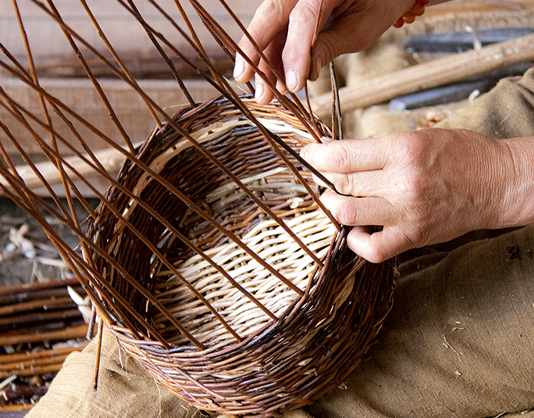
Wickerwork


Wickerwork is a domestic activity. Its low production costs certainly explain why it was widely used to create objects such as baskets, Moses baskets, carpets, fish traps, or armchairs. For their realisations craftspeople use osier, rush, hazel tree, willow, bramble, birch as well as any another plant material which can be woven.?A surprising use of wickerwork is also quoted by Caesar who reported that during their independence, some Gallic tribes would shape huge “wicker human-shaped figures” that were filled with live men and set alight … (The Gallic Wars, IV, 16).

The Gallic basket makers succeeded in making coracles, in other words small oval or round boats mentioned by Latin authors such as Caesar and Pliny the Elder. Made up of a wickerwork frame, covered with leather, these boats are so light that they can be carried upon ones shoulders. This primitive type of boat was used by the Bretons at the time of Julius Caesar’s invasion, who described it and even got to use it during his Spanish campaign. According to authors of the time, the leather used was of horse or bull.

The Irish Currach is still used nowadays, in particular on the river Spey. Other boats through the world are again of the same type : American Indian Bullboat, the Iraqi Gufa, the Vietnamese Thung-chai and the Tibetan Ku-dru and Kowas.

 Back
Back Tickets
Tickets